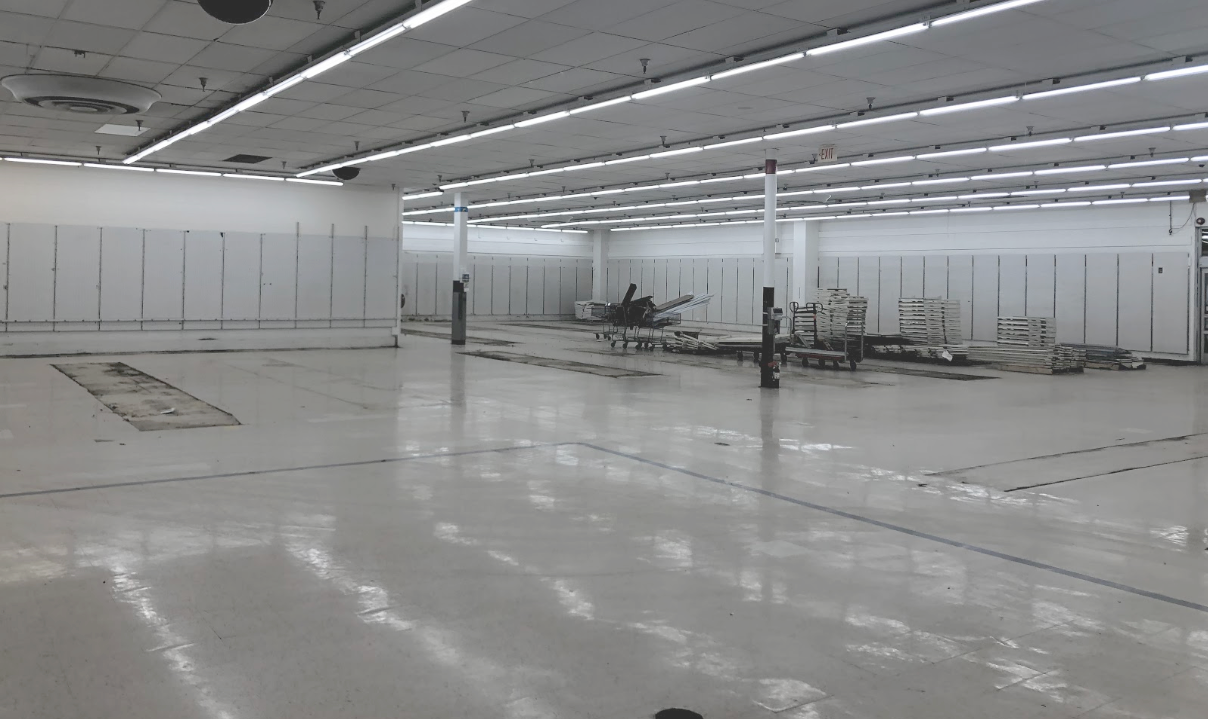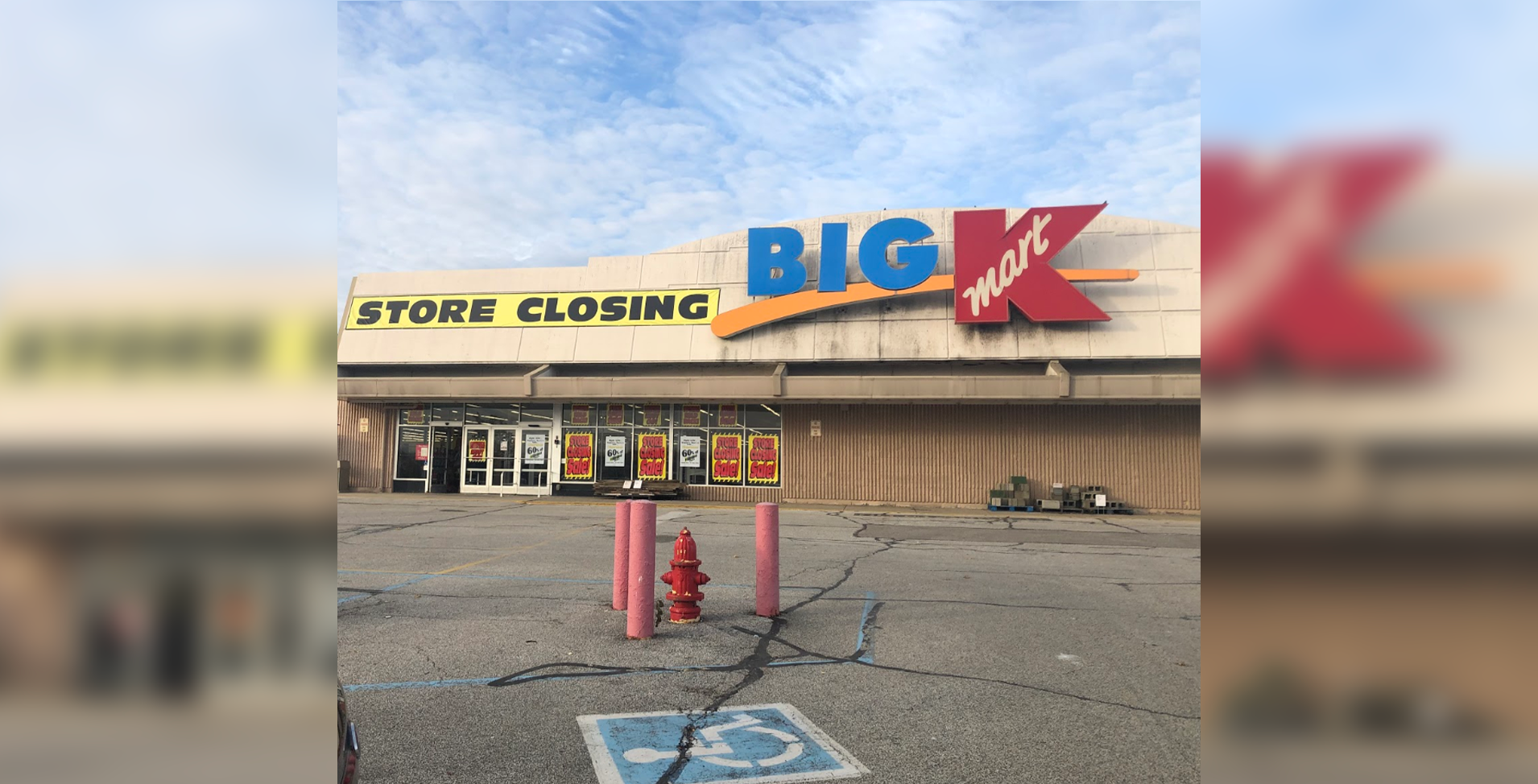Kmart, Milford, Massachusetts, 2001: I’m three years old, walking down the aisle with my grandma, and a beacon called to me. There, at the end of the aisle, stood a magnificent, colorful pop-up display — it was an archway surrounding the entire aisle, with Jim Carrey’s Grinch at its apex, staring right at me with his yellow eyes and goofy expression. Below, the aisle was lined with a panoply of Grinch merchandise and Kmart promotional tie-ins, namely the newly released DVD which I still own to this day. For three year old me, this was Eden.
This ephemeral display, a monument to crass commercialism and waste, is one of my earliest memories. As a child, my religion was consumerism. I was completely sucked into the endless abyss of promotional tie-ins, the unholy marriage of multimedia entertainment with merchandise sales. I organized my world around Shrek, Spongebob, and Happy Meal toys — I was every advertising executive’s dream.
In the 19 years since, they’ve remade the Grinch, and my local Kmart has shuttered its doors. The last time I went there, just before it closed in 2014, the distinct musty smell and the state of disarray made me feel as if little had changed since 2001 — although the store had certainly accreted some grime. I have been fascinated with the slow decay of Kmart for seven years of my life: how, exactly, it went from a store with elaborate promotional displays to a complete wasteland.
Kmart is an open wound within the otherwise smooth space of retail. It is a place of uneven temporalities, where IBM computers from the 1990s, signage from 2005, and Kylo Ren action figures stand side by side. It is a living monument to obsolescence and the fact of history amidst the endless rush of consumer trends and styles.
In the world of retail history blogs, dozens of people like me are Kmart-obsessed. The most dedicated Kmart enthusiasts online will travel up to 6 hours to go see the last monuments to the dying company. Perhaps this niche phenomenon is driven by mere nostalgia — after all, many of us tell our personal histories through brands and consumer trends. However, I do think there is something particularly illuminating about the decay of Kmart. its downfall is not just the failure of one single company, but illustrates the reality of the current stage of capitalism — neoliberal capitalism, finance capitalism, late capitalism, etc. — and the fact that this system is neither eternal nor stable.
Talk to any older person and they will likely remember how Kmart used to be the discount store to go to, long before the dominance of Walmart and Target. During the 1980s, two decades after businessman S. S. Kresge built the flagship store in Garden City, Michigan, Kmart was the nation’s second largest retailer behind Sears with around 2,500 stores nationwide. In 1990, however, Walmart had surpassed Kmart for the number two spot. Kmart lacked Walmart’s advanced technology and logistics and, as a result, could not keep up with its low prices. In 2002, the company filed for chapter 11 bankruptcy, closed over 300 stores, and laid off up to 35,000 workers.
Enter: hedge fund wunderkind Edward “Fast Eddie” Lampert. Fast Eddie bought a large stake in Kmart, guiding it out of the bankruptcy process through his hedge fund ESL Investments. With Lampert as the retailer’s new chairman, and ESL the its new majority stakeholder, Kmart emerged out of bankruptcy. In 2004, Lampert’s Kmart purchased Sears for $11 billion to create Sears Holdings Company, with Lampert’s former Yale roommate Steven Mnuchin, current Treasury Secretary, as a member of the board.
Since then, the results have been nothing but disastrous. In 2018, the company filed for bankruptcy a second time, and as of this month only 59 Kmart stores remain open. Sears/Kmart sales have plummeted from $53 billion in 2003 to less than $17 billion in 2017. Although Lampert has his defenders, most of the blame has been placed on his questionable and self-serving business practices. Though the merger of Sears of Kmart, Lampert loaded both companies with debt while simultaneously buying back stock to enrich shareholders. Lampert’s hedge fund even became a lender to Sears Holdings, making money off of interest payments and other fees. He also sold valuable Kmart and Sears real estate to his own real estate investment fund, Seritage Properties, earning rent as well as the rights to those properties in bankruptcy proceedings. This all happened while Lampert declined to invest in stores and employees and sold off many valuable Sears properties such as Craftsmen and Lands End (which he sold to himself).
Kmart shows how, in late capitalism, it can be more profitable to destroy than to build. Lampert and his hedge fund have made their money by picking the bones of Kmart, stripping off any valuable assets for their own profit. According to political economist Robert Kuttner, e-commerce has played a smaller role in the decline of retail compared to the private equity firms and hedge funds that have taken over struggling retailers in recent years — these firms are also behind the late Toys R Us and Sports Authority.
Hedge funds and private equity firms signal a shift towards financialized capitalism, rooted in speculation and the fluctuations of shareholder value. Under the direction of Lampert and his hedge fund, Kmart and Sears are merely speculative vehicles manipulated to generate profit. The pursuit of profit exists at a complete remove from the actual “success” of the company itself. Lampert became both creditor and shareholder, which allowed him and his hedge fund to profit off of its decline rather than invest in its success.
In industrial “Fordist” capitalism, the economic paradigm of the post-Depression, post-WWII “American century,” a company’s success generally meant positive outcomes for the company, its labor force, and the consuming public. A company’s success meant rising wages for the worker, desirable products for consumers, and steady economic growth for the capitalist owners. Fordism derives its name from Henry Ford’s business model, which pays workers well over the minimum they need, giving the power to buy more products — namely, the products that they produce — generating long-term growth for the company.
Under neoliberal, financialized capitalism, capital has completely broken off from labor, engaging in rapacious banditry rather than long-term investment. Lampert could not have invested less in Kmart and Sears’ workforce. After Sears Holdings filed for bankruptcy in 2018, hundreds of workers were laid off through store closures — due to the bankruptcy proceedings, these workers stopped receiving severance pay after only four weeks. At the same time, Sears Holdings sought court approval to give corporate executives as much as $25 million in bonuses.
The downfall of Kmart and Sears exemplifies what Kuttner has called “vulture capitalism” or what David Harvey has called “accumulation through dispossession.” Capital’s main money-making strategy is no longer increased production, which would require increased investment in labor. Rather, it is predatory dispossession, which involves raiding companies, acquiring usurous debt, and privatizing public goods. The ruins of Kmart represent the “creative destruction” of this mode of capitalism, the remains of its raptorial war path.

A vacant Kmart is not the unlucky victim of forward-marching time. It is a victim of a coordinated attack, by a handful of finance capitalists who fleeced Sears Holdings for all it was worth, leaving a wake of destruction. The so-called “retailpocalypse” represents the end of the promise of Fordist America: suburban expansion, rising living standards, and increased consumption. In the retail districts of Elyria, Lorain, or the Cleveland suburbs, there is a profound emptiness to the sweeping parking lots, four lane roads, and half vacant strip malls. If there is anything depressing about this region of the country, it is the feeling of lost dreams and false projections. Massive retail complexes all around here were built with the expectation of a prosperous future. Now, we are just left with the decaying remains, in a country that has left its working class in a state of perpetual precarity and economic decline.
What, then, attracts me to dead and dying Kmarts? It’s not merely nostalgia, nor an aesthetic appreciation for decay and the forgotten. These spaces are too recent to be fully consigned to the past, and some are, in spite of everything, still operating. In fact, there is something uniquely haunting about walking through one of the Kmarts remaining open. Everything is dated, the store is grimy, food products are expired — yet, it’s still displayed under the pretense of catering toward shoppers!
The main difference between a Kmart and a Walmart or Target is that no one Kmart is the same. Their retail floors are haphazard assemblages of both dated and recent consumer aesthetics. There is no standard aesthetic, no sense of curation. This, paradoxically, makes each Kmart unique, a place in and of itself which can be explored and comprehended. These mixed temporalities introduce history into the domain of consumer culture, which styles itself timeless.
Capitalism’s eternal now, its constant updates and perpetual presence in the present, leads to a feeling of cultural amnesia — consumers are so caught up in new fashions and styles that they cannot help but lose sight of our culture’s detritus. This obscures the very nature of the beast: the capitalist system is driven by destruction and decay.
There is a style of minimalist American fiction called “Kmart realism,” which deals with the experiences of working class people in drab, bleak environments. What we need is more Kmart realism, a deep dive into the muck and grime of our own culture. Instead of going to your local art museum, go to Kmart, or another rotting consumer monument. What better monument to capitalism is there?

